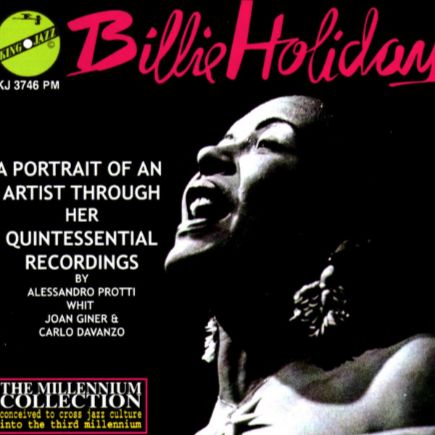Do You Know What It Means to Miss New Orleans?: un hymne à la ville berceau du jazz
Composée par Louis Alter sur un texte d’Eddie DeLange, Do You Know What It Means to Miss New Orleans? est enregistrée par Louis Armstrong en 1946 chez RCA Victor, avant d’être reprise l’année suivante dans la bande sonore du film New Orleans d’Arthur Lubin. Ce mélodrame musical met en scène un couple incarné par Billie Holiday et Louis Armstrong lui-même, également présent à la trompette.
Devenue un standard incontournable, la chanson exprime avec force la nostalgie et l’attachement viscéral à La Nouvelle-Orléans. Sa mélodie poignante, portée par des paroles sensibles, fait revivre l’âme singulière de cette ville mythique, entre beauté mélancolique et chaleur humaine.
Berceau du jazz, La Nouvelle-Orléans a vu naître un langage musical nouveau, nourri d’un foisonnement d’influences: brass bands, blues, ragtime et chants spirituels se sont entremêlés pour forger l’identité sonore d’un genre en pleine éclosion. Dans ce contexte, Do You Know What It Means to Miss New Orleans? s’est imposée comme une véritable signature émotionnelle de la ville, souvent interprétée lors de festivals, dans les clubs, ou au cours de cérémonies commémoratives.
Armstrong et Holiday: le jazz au cinéma
Ici, l’interprétation de la chanson Do You Know What It Means to Miss New Orleans? par Billie Holiday pour le film New Orleans.qui, malgré un scénario convenu, demeure un jalon marquant de la rencontre entre jazz et grand écran.
Deux éléments en font une œuvre singulière. D’abord, la présence de Billie Holiday, qui incarne une domestique chanteuse liée sentimentalement au chef d’orchestre joué par Louis Armstrong. Il s’agit de l’unique apparition de Lady Day dans un long-métrage, ce qui confère à New Orleans une valeur historique inestimable. Ensuite, l’importance donnée au jazz de La Nouvelle-Orléans: plus de vingt chansons y sont reprises, partiellement ou intégralement, offrant une vitrine exceptionnelle au style Dixieland.
Autour de Louis Armstrong, le film réunit une distribution musicale d’envergure, regroupant Kid Ory au trombone, Zutty Singleton à la batterie, Barney Bigard à la clarinette, Bud Scott à la guitare, George ‘Red’ Callender à la contrebasse, ainsi que Charlie Beal et Meade Lux Lewis au piano. Le cornettiste Mutt Carey et le chef d’orchestre Woody Herman viennent également enrichir ce casting de prestige.
Do You Know What It Means to Miss New Orleans?: un himno a la ciudad cuna del jazz
Compuesta por Louis Alter con letra de Eddie DeLange, Do You Know What It Means to Miss New Orleans? fue grabada por Louis Armstrong en 1946 para RCA Victor, y retomada al año siguiente en la banda sonora de la película New Orleans, dirigida por Arthur Lubin. Este melodrama musical presenta a una pareja interpretada por Billie Holiday y el propio Armstrong, también presente con su trompeta.
Convertida en un estándar imprescindible, la canción expresa con fuerza la nostalgia y el profundo apego por Nueva Orleans. Su melodía conmovedora y su letra sensible evocan el alma única de esta ciudad mítica, entre melancolía y calidez humana.
Cuna del jazz, Nueva Orleans fue el escenario del nacimiento de un lenguaje musical nuevo, nutrido por un crisol de influencias: brass bands, blues, ragtime y cantos espirituales se entrelazaron para dar forma a la identidad sonora de un género emergente. En este contexto, Do You Know What It Means to Miss New Orleans? se impuso como una verdadera firma emocional de la ciudad, interpretada con frecuencia en festivales, clubes y actos conmemorativos.
Armstrong y Holiday: el jazz en el cine
Aquí, la interpretación de la canción Do You Know What It Means to Miss New Orleans? por Billie Holiday para la película New Orleans, que, a pesar de un guion convencional, permanece como un hito en el encuentro entre el jazz y la gran pantalla.
Dos aspectos la convierten en una obra singular. En primer lugar, la presencia de Billie Holiday, que encarna a una criada cantante sentimentalmente unida al director de orquesta interpretado por Louis Armstrong. Se trata de la única aparición de Lady Day en un largometraje, lo que confiere a New Orleans un valor histórico inestimable. En segundo lugar, la importancia otorgada al jazz de Nueva Orleans: más de veinte canciones se interpretan parcial o totalmente, ofreciendo un escaparate excepcional al estilo Dixieland.
Alrededor de Louis Armstrong, la película reúne un elenco musical de gran envergadura, con Kid Ory al trombón, Zutty Singleton en la batería, Barney Bigard al clarinete, Bud Scott a la guitarra, George ‘Red’ Callender al contrabajo, así como Charlie Beal y Meade Lux Lewis al piano. El cornetista Mutt Carey y el director Woody Herman completan este reparto de prestigio.
Do You Know What It Means to Miss New Orleans?: un inno alla città culla del jazz
Composta da Louis Alter su testo di Eddie DeLange, Do You Know What It Means to Miss New Orleans? fu registrata da Louis Armstrong nel 1946 per la RCA Victor, e ripresa l’anno seguente nella colonna sonora del film New Orleans di Arthur Lubin. Questo melodramma musicale racconta una storia d’amore interpretata da Billie Holiday e dallo stesso Armstrong, presente anche alla tromba.
Divenuto un classico intramontabile, il brano esprime con intensità la nostalgia e il legame profondo con New Orleans. La melodia struggente e il testo toccante evocano l’anima inconfondibile di questa città leggendaria, sospesa tra bellezza malinconica e calore umano.
New Orleans, culla del jazz, ha visto nascere un linguaggio musicale nuovo, alimentato da un ricco intreccio di influenze: brass band, blues, ragtime e canti spirituali hanno contribuito a definire l’identità sonora di un genere in piena espansione. In questo contesto, Do You Know What It Means to Miss New Orleans? si è affermata come una vera firma emotiva della città, spesso eseguita nei festival, nei club jazz e durante commemorazioni pubbliche.
Armstrong e Holiday: il jazz al cinema
Qui, l’interpretazione della canzone Do You Know What It Means to Miss New Orleans? di Billie Holiday per il film New Orleans, che, nonostante una trama convenzionale, rimane una pietra miliare nell’incontro tra jazz e grande schermo.
Due elementi la rendono un’opera unica. Innanzitutto, la presenza di Billie Holiday, che interpreta una domestica cantante sentimentalmente legata al direttore d’orchestra impersonato da Louis Armstrong. Si tratta dell’unica apparizione di Lady Day in un lungometraggio, il che conferisce a New Orleans un valore storico inestimabile. Inoltre, l’importanza attribuita al jazz di New Orleans: più di venti brani vengono eseguiti, in parte o integralmente, offrendo una vetrina straordinaria allo stile Dixieland.
Attorno a Louis Armstrong, il film riunisce un cast musicale di rilievo, con Kid Ory al trombone, Zutty Singleton alla batteria, Barney Bigard al clarinetto, Bud Scott alla chitarra, George ‘Red’ Callender al contrabbasso, oltre a Charlie Beal e Meade Lux Lewis al pianoforte. Il cornettista Mutt Carey e il direttore Woody Herman arricchiscono ulteriormente questo cast prestigioso.
Do You Know What It Means to Miss New Orleans?: an anthem to the birthplace of jazz
Composed by Louis Alter with lyrics by Eddie DeLange, Do You Know What It Means to Miss New Orleans? was recorded by Louis Armstrong in 1946 for RCA Victor and featured the following year in the soundtrack of Arthur Lubin’s film New Orleans. This musical melodrama tells a love story portrayed by Billie Holiday and Louis Armstrong himself, who also plays the trumpet.
Now a timeless standard, the song powerfully conveys the longing and deep emotional bond with New Orleans. Its poignant melody and heartfelt lyrics bring to life the soul of this legendary city—one marked by its melancholic beauty and human warmth.
As the birthplace of jazz, New Orleans gave rise to a new musical language, shaped by a rich fusion of influences: brass bands, blues, ragtime, and spirituals all contributed to the emergence of the jazz sound. In this context, Do You Know What It Means to Miss New Orleans? has become an emotional signature of the city, frequently performed at festivals, in jazz clubs, and during commemorative events.
Armstrong and Holiday: jazz on the silver screen
Here, Billie Holiday’s rendition of Do You Know What It Means to Miss New Orleans? for the film New Orleans, which, despite a conventional script, remains a landmark in the meeting of jazz and cinema.
Two elements make it a unique work. First, the presence of Billie Holiday, who plays a singing maid romantically linked to the bandleader portrayed by Louis Armstrong. It was Lady Day’s only appearance in a feature film, giving New Orleans an invaluable historical significance. Second, the central role of New Orleans jazz: more than twenty songs are performed, either partially or in full, offering an exceptional showcase for the Dixieland style.
Surrounding Louis Armstrong, the film assembles a stellar musical cast: Kid Ory on trombone, Zutty Singleton on drums, Barney Bigard on clarinet, Bud Scott on guitar, George ‘Red’ Callender on bass, along with Charlie Beal and Meade Lux Lewis on piano. Cornetist Mutt Carey and bandleader Woody Herman also add to this distinguished lineup.

Autres articles – Otros artículos – Altri articoli
Do You Know What It Means To Miss New Orleans?–17.10.1946–Louis ARMSTRONG
Do You Know What It Means To Miss New Orleans?–01.06.1956–Louis ARMSTRONG
Do You Know What It Means To Miss New Orleans?–13.11.1959–Kid ORY & Red ALLEN
Do You Know What It Means To Miss New Orleans?–xx.07.1981–Stéphane GRAPPELLI
Do You Know What It Means To Miss New Orleans?–19-20.12.1986–Wynton MARSALIS
Do You Know What It Means To Miss New Orleans?–01.11.1988–Harry CONNICK Jr.
Do You Know What It Means To Miss New Orleans?–xx.xx.1991–Pete FOUNTAIN
Do You Know What It Means To Miss New Orleans?–25.08.2005–Stefano BOLLANI
Do You Know What It Means To Miss New Orleans?–30.09.2008–TAKE 6 & Aaron NEVILLE
Do You Know What It Means To Miss New Orleans?–20.10-21.10.2008–Jerry GRANELLI


